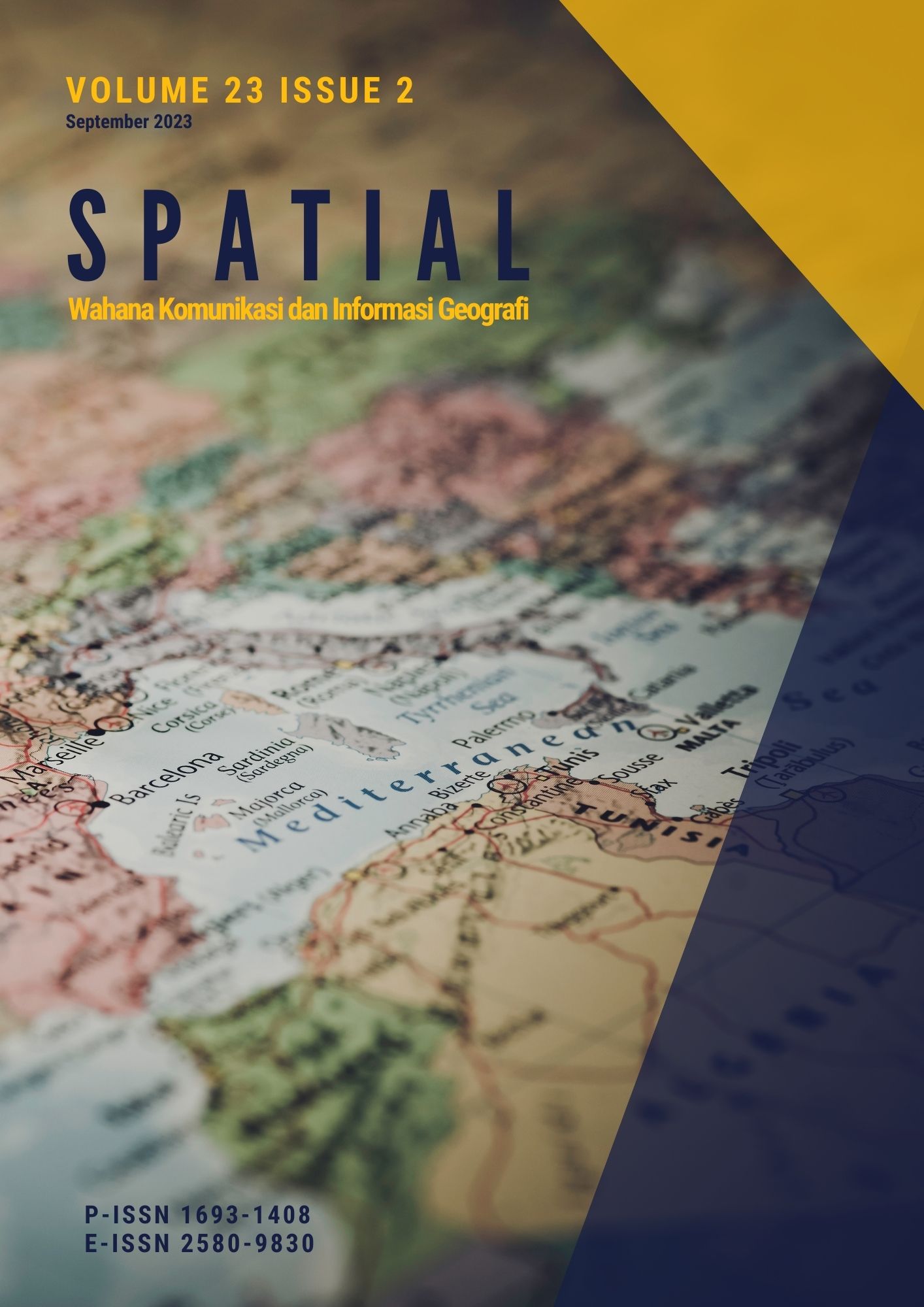Information Literacy on Flood Disaster Mitigation for Community Disaster Preparedness in Bulubonggu Village, Dapurang Sub-District
DOI:
https://doi.org/10.21009/spatial.232.06Abstract
Bulubonggu Village is one of the villages that is often affected by floods, this is proven in 2020 the flood height reached an average of 1-2 m. The village is close to the watershed and has a flat land topography. This flood disaster caused several people's houses and agricultural land to fail crops. This happened due to the lack of understanding of disaster information literacy by the people of Bulubonggu village. This research uses qualitative methods with a spatial approach. The research subject of the Bulubonggu village community. Data collection techniques and instruments are carried out through observation, and interviews. Qualitative descriptive data analysis techniques. The results are a total of 29 people or 36.25% of understanding of disaster information literacy in the Bulubonggu village community was in the medium category, a total of 32 people or 40% had an understanding of disaster information literacy in the community in the low category, and a number of 35 people or 43.75% had an understanding of disaster information literacy in the very low category in the Bulubonggu village community
Downloads
Published
How to Cite
Issue
Section
License
An author who publishes in the journal SPATIAL Wahana Komunikasi dan Informasi Geografi agrees to the following terms:
Author retains the copyright and grants the journal the right of first publication of the work simultaneously licensed under the Creative Commons Attribution 4.0 License that allows others to share the work with an acknowledgement of the work's authorship and initial publication in this journal
Author is able to enter into separate, additional contractual arrangements for the non-exclusive distribution of the journal's published version of the work (e.g., post it to an institutional repository or publish it in a book) with the acknowledgement of its initial publication in this journal.
Author is permitted and encouraged to post his/her work online (e.g., in institutional repositories or on their website) prior to and during the submission process, as it can lead to productive exchanges, as well as earlier and greater citation of the published work (See The Effect of Open Access).
This work is licensed under a https://creativecommons.org/licenses/by/4.0/









